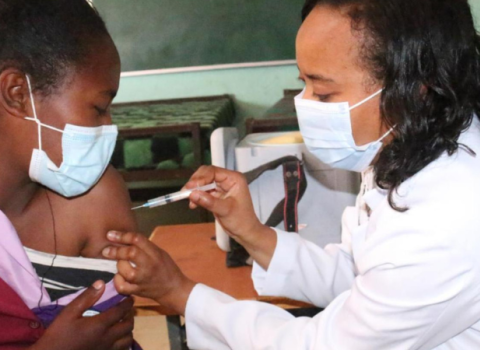
“Our conclusion is that the pre-clinical development studies that were performed with TGN 1412 did not predict a safe dose for use in humans, even though current regulatory requirements were met,” says the Expert Scientific Group in its final report.
The better news is that after six months of investigations a 20-strong team of researchers at the UK’s National Institute of Biological Standards and Controls succeeded in recreating the reaction in human cells in vitro – enabling such a test to be made mandatory in future.
Call for open database
The report accompanied details of this finding with 22 recommendations, including a call for an open database for reporting any adverse trial data, and a new approach to setting initial doses for drugs for first in man trials.
“The manner and timing of implementation of these recommendations will now be key,” said Aisling Burnand, Chief Executive of the BioIndustry Association, the UK trade body representing the biotech sector.
She told ScienceBusiness, “We need to make sure the implementation happens. From the industry’s perspective we are keen to see best practice disseminated.”
The Expert Group was set up to investigate the trial at Northwick Park Hospital in London last March of TGN1412, a monoclonal antibody designed to treat leukaemia. Six volunteers suffered cytokine storms – extreme immune system reactions that but for prompt admission to intensive care – would have been fatal.
The brief was to study what happened in the trial and advise on implications for first in man trials of biological molecules with novel modes of action, new agents with a high degree of species specificity and new agents pointed at immune system targets.
Interim report
An interim report by the expert group failed to find any fault with the preclinical studies carried out by TeGenero, the German company that discovered the antibody. Similarly, there were no problems with manufacturing . And while they picked at one or two procedural shortcomings, the experts found no significant faults in the administration of the trial either.
Those findings, published in July 2006, appeared to clear the, by then, bankrupt TeGenero, the safety and ethics committees, and Parexel International, the research company that carried out the trial.
But the absence of a precise explanation for what caused such a disastrous reaction meant there was no footing on which to move forward, apart from the blindingly obvious suggestion that in future first in man trials of such novel products, subjects be dosed separately.
Effect recreated
Given that, the crucial element of the final report is that investigators finally succeeded in recreating the effect caused by TGN1412 in the laboratory. This “may provide potential answers to scientific questions surrounding the adverse reactions to TGN1412 in the clinical trial, and why similar reactions were not detected in pre-clinical testing in animals,” says the expert group.
The researchers found that TGN1412 only provoked a cytokine storm when it was tested on human cells that were fixed on a surface, as would occur within organs in the body, and not in human cells in solution, the format used in the in vitro tests carried out by TeGenero.
When the researchers tried to recreate the effect in vitro by fixing cells from macaque monkeys, as used in the in vivo animal tests, there was no effect, indicating that TGN1412 is so precisely targeted at the human immune system that animal tests of immune system responses are not relevant.
One curiosity still lingering over the difficulty in sparking production of T-cells in preclinical trials is that TGN1412 was designed to do just that. But rather than provoking their uncontrolled generation, the aim was to marshal a specific subset of cells, priming the immune system to react against leukaemic cells.
Whatever questions may be left hanging, Burnand believes it is time to draw a line from a scientific perspective.
“But we have got to implement the findings,” she said. “The whole episode demonstrates it was an isolated case. Now we need to restore patient confidence.”
“Those operating in this area already use best practice. We know we need a cautious approach, particularly with novel products.”
Or, as the expert group put it, “The aim is to optimise safety, without stifling innovation, or raising unnecessary barriers to the development of useful new medicines.”





 A unique international forum for public research organisations and companies to connect their external engagement with strategic interests around their R&D system.
A unique international forum for public research organisations and companies to connect their external engagement with strategic interests around their R&D system.